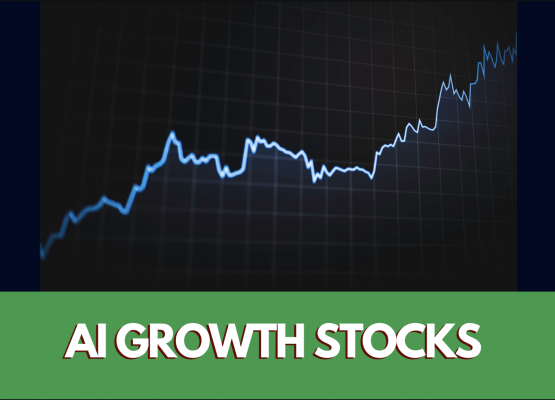Introduction
Cryptocurrencies like Bitcoin have exploded in popularity in recent years. With their extreme price volatility, along with their high upside potential, cryptocurrencies can be both an exciting, along with a high-risk investment choice. If you’re new to the crypto/blockchain world, getting started investing or trading these digital assets may seem daunting. This guide aims to walk you through everything you need to know, step-by-step, in terms of making your initial entry into the cryptocurrency markets.
Step 1: Do Your Research
Before choosing any cryptocurrency to invest in, it’s essential to do thorough research. There are thousands of cryptocurrencies out there, and not all of them are created equal. Beyond the “flagship coins” such as Bitcoin and Ethereum, there are many other types of coins out there called “altcoins”, which include coins such as Litecoin, Cardano, Polkadot or Solana.
You can learn more about the different cryptocurrencies and altcoins out there, including crypto white papers. Check out the specific technology and potential use cases of the coin, along with any potential partnerships. Pay attention to market capitalization as an indicator of stability and growth potential. Following crypto thought leaders and news sites can help you identify promising investment candidates.
Step 2: Choose a Cryptocurrency Exchange
Crypto exchanges are online platforms that allow you to buy, sell and hold digital currencies. Some of the largest exchanges include giants such as Coinbase, Gemini and Crypto.com, which have become popular due to their easy to use and intuitive interfaces.
When selecting an exchange, consider factors including the security practices, fees, available crypto assets and payment methods. Many exchanges have educational resources on crypto and blockchain, and even offer bonuses to help you get started. You will need to provide personal identification verification to register for any reputable exchange before transacting on the platform.
Step 3: Funding Your Exchange Account
You’ll need to connect a traditional payment method in order to fund your account, and purchase cryptocurrencies. Exchanges typically accept many different types of credit cards, debit cards, bank account transfers and services like PayPal.
Processing times and transaction fees differ widely across platforms. Bank transfers are generally cheaper, but slower at 1-5 business days, while debit/credit card purchases are fast but may have higher fees, perhaps around 4 or 5%.
Step 4: Execute Your First Crypto Purchase
Once your account is funded, it’s time to officially buy your first crypto coin (or coins)! Consider starting very small, especially as a beginner. Due to the highly speculative nature of cryptocurrencies, it is generally recommended not to invest more than 5% of your overall net worth or investment portfolio(s), due to the extreme risk and volatility of the asset class (especially as a beginner).
When it comes to actually purchasing the crypto coins, after you have done your research and found a coin (or coins) you wish to buy, it’s often as simple as visiting your exchanges website and entering in your chosen cryptocurrency on your exchange account’s buy/sell screen.
Then, simply enter the quantity of coins or dollar amount you wish to purchase, and complete the transaction. Congratulations, you are now officially an investor/trader/hodler of crypto!
Secure Storage Solutions
Once you buy crypto on an exchange, it’s typically stored in your exchange-provided wallet automatically. However, for enhanced security, many experts recommend withdrawing to a private crypto wallet, which is unconnected to any centralized entity.
Every wallet has a unique key, which is needed to access your holdings, so security here is crucial. Popular “hot wallet” software options include Exodus and MetaMask, while offline “cold storage” hardware wallets like Trezor and Ledger offer additional protection.
Long-Term Investing vs. Short Term Trading
Now that you’ve officially made your first cryptocurrency purchase, it’s time to decide on your specific time horizon & strategy.
Will you take a passive HODL approach – which is crypto community jargon for “holding onto cryptocurrency for price appreciation over a long period of time”? Or will you pursue a more active trading approach, perhaps attempting to time buys and sells to try and intraday volatility into profits?
New entrants to the crypto market may try a variety of strategies, including day trading, swing trading, and the all famous “HODL” strategy, which is holding onto crypto for a longer period of time, in the hopes of benefiting from longer term trends in the cryptocurrency markets.
This brings up another important consideration, which is that like the business cycle, the crypto market has experienced large booms and busts in recent years, which has resulted in significant price volatility and major price fluctuations for many of the most popular coins.
This can be both a significant risk, but can also present a tremendous opportunity for large profits, if you are an experienced crypto “HODLER”.
All of this being taken into consideration, the idea of never taking profits, especially in the extremely volatile world of cryptocurrencies, can be dangerous, due to the missed opportunities and the resulting collapse of the coins value.
For example, if you end up “HODLing” a crypto coin that skyrockets 1500% from where you bought it, but you don’t sell, there’s a good chance the same crypto coin could sell off significantly from the peaks several weeks or months later, which means you may have lost a significant amount of the profits you had “on paper”.
This is the classic “parabolic spike and collapse” that is often seen on cryptocurrency charts, (including the one below), where a short lived price movement is seen, only to result in a significant decline of the coin after the move subsides (often in the weeks and months that follow).

Special Note: The chart above, courtesy of Google charts, shows the cryptocurrency Dogecoin (DOGE), as it skyrocketed from a low of about .003 (3/10ths of a cent) in December 2020, and hit over .60 cents per coin by May 2021, in the bull market, crypto mania which occurred during this period. This represents a total return of over 19,000% within approximately a six month period, but timing such an event would be paramount to realizing significant profits. Thus, the thrill and mania that can occur in the crypto markets can often result in significant volatility, which creates opportunity, and it also creates risk.
Expanding Your Cryptocurrency Portfolio Over Time
As you become more comfortable, consider diversifying into additional digital assets. DYOR (Do Your Own Research) always applies when evaluating new potential altcoins which may offer high return potential, or real-world utility.
Additionally, keep in mind that as can be seen from the chart above, timing your specific entry and exit points will be paramount to a successful cryptocurrency trading and/or HODLing strategy.
Following a structured vetting process before throwing money at any coin, based on the fundamental knowledge you’ve built, along with a well-rounded technical analysis approach when it comes to your specific entries and exits, will be important to significantly improving your chances of success.
Putting this all together, the research you’ve done on the specific coin(s) you plan on buying is very important, due to knowledge being power and the more knowledge you have about what you are putting your money into, the more comfortable you will feel, and your decision making process overall will be more rational, and based less upon fear & greed.
Continuing Education
The open, peer-to-peer nature that defines crypto & blockchain depends on transparent access to information. As such, consider committing to ongoing learning & education of the market, by following some of the prominent minds and figures in the industry, signing up for email newsletters, and exploring how blockchain intersects with your interests.
Consider joining local groups or attending conferences (if available) to connect with fellow blockchain and crypto enthusiasts in person. As you advance, consider other possibilities such as yield farming, staking, providing crypto lending liquidity, and exploring investments in blockchain infrastructure companies or funds.
Additionally, with the SEC approving spot Bitcoin ETFs recently, consider them as a potential avenue for easy access to the crypto market. This includes the VanEck Bitcoin Trust (HODL) and the WisdomTree Bitcoin Fund (BTCW). It is important to note that with these exchange traded funds (ETFs), you don’t need to signup for a crypto exchange. Instead, you can simply sign up for an online stock broker, and purchase the ETFs directly through them.
Next Steps into an Exciting New World
And there you have it! A beginner’s guide for tapping into the extremely volatile and risky, yet potentially lucrative and exciting world of the cryptocurrency markets. Remember to consider starting small, building foundational knowledge, and managing risk as you navigate your entry into this rapidly evolving landscape.
Crypto assets remain highly speculative, so never invest more than you can afford to lose! Additionally, cryptocurrency investing is not for everyone, and it is important to consider your own investment goals & objectives in the context of investing in these coins.




